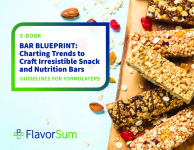Unilever moves closer with GM ice cream protein
approved for the European market, as the FSA published its draft
opinion on Unilever technology under novel foods regulation.
The consumer goods firm applied to the UK's Food Standards Agency (FSA) for novel foods approval to use ice-structuring proteins derived from a fermented genetically modified baker's yeast last year.
The draft opinion that the ISP preparation is acceptable subject to proposed parameters, on which the FSA is currently eliciting comments, is a step towards Unilever gaining the go-ahead for Europe.
However the agency opines that consumers should be made aware that products made using the ISP, even though the GM yeast cells are removed from the final product.
ISPs are naturally occurring proteins and peptides found in living organisms such as fish, which protect them from tissue damage in very cold conditions by modifying the size and shape of ice-crystals.
Unilever found that type III ISPs from the cold water fish ocean pout could be used in ice-cream products to make a large number of very small ice crystals, as opposed to the small number of large crystals produced by conventional freezing techniques.
This ice-structure enables different kinds of formulations, such as low-fat.
However since the it would be unsustainable to use proteins directly from the fish, Unilever developed a fermentation process using the GM yeast carrying the synthetic gene encoding for the ISP.
The European Commission stated in a recent report that ingredients produced by fermentation using GM micro-organisms not present in the final product do not fall under GM food legislation - and therefore do not need to be labelled as GM.
Although this applies to Unilever's ISP, the FSA's Advisory Committee on Novel Foods and Processes (ACNFP) said this was a special case, on the grounds of "the use of a synthetic gene sequence and the presence… of a significant proportion of cellular by-products from the fermentation process such as yeast proteins".
Thus, it recommends that consumers should be provided with information indicating that the ingredient is made using a GM yeast - either through information provided on food packaging or "via other easily accessible routes".
Given that European public opinion remains largely opposed to GMOs, such information could potentially turn some consumers off the products.
Moreover, the novel foods application, required since the ISO was not commonly used in foods in the EU prior to 1997, has already caused considerable controversy with anti-GM campaigners.
Last July scientists working on behalf of pressure group the Independent Science Panel submitted their findings to the FSA that the health and safety risks that have not been taken into account.
Such concerns are likely to resurface during the consultation on the initial draft opinion.
The transgenic protein has already been authorised in Australia, New Zealand, Chile, Indonesia, Mexico, the Unites States and the Philippines.
In addition to the GM labelling, the agency also said that products made using the ISP preparation should carry labels indicating yeast derivation, for the benefit of allergy sufferers.
Comments are being accepted by the FSA until April 16, and these will be considered by the ACNFP before it issues its final opinion.














